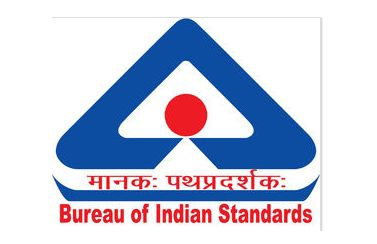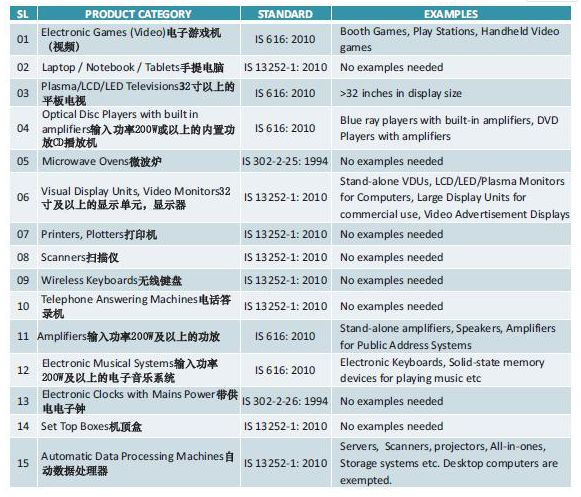In order to unify product supervision standards and requirements and ensure product quality and safety, India began to implement a product certification system in 1955. All products listed in compulsory certification must obtain product certification according to Indian product standards before they can enter the market. Therefore, it is necessary for manufacturers who want to enter the Indian market to understand the product certification system in India.
India Product Certification Organization According to the Indian Bureau of Standards Act 1986, the Bureau of Indian Standards (BIS) is specifically responsible for product certification. It is also the only product certification body in India. There are 5 regional bureaus and 19 branch bureaus under BIS. The regional bureau supervises the corresponding branch. Eight laboratories and some independent laboratories belonging to BIS are responsible for the inspection of samples taken during the product certification process. These laboratories are implemented in accordance with ISO/IEC17025:1999.
India product certification has a history of 50 years since the predecessor of BIS, the Indian Standards Institute, started product certification in 1955. At present, BIS has issued more than 30,000 product certification certificates, covering almost every industrial field such as agricultural products, textiles, and electronics.
BIS certification mark

India product certification process BIS product certification certificate awarding process
(1) Application. Fill in the special application form and pay the application fee to the BIS branch where the factory is legally located. In addition to the special application form, the following documents need to be submitted: 1. Factory location and factory distribution map; 2. Proof of production plant; 3. List of existing production equipment and inspection equipment; 4. Testing and inspection currently in use or proposed to be used Scheme, together with a letter of commitment to comply with the BIS-approved testing and inspection scheme after the certificate is granted; 5. Letter of commitment to pay the prescribed marking fee from the date of award of the certificate; Letter of commitment to discontinue the use of the mark; 7. Flow chart describing the production and inspection steps; 8. Details of existing technicians.
(2) Records. After a detailed review, if the application procedures are complete, BIS will record the application and assign an application number to the applicant, thus the application is established.
(3) Initial inspection. To determine whether a product complies with Indian standards through an assessment of the company's production capacity and control level, quality control techniques, existing equipment, staff skills, and sample testing.
(4) Issuing certificates. If the initial inspection and sample test results meet the conditions, a certificate will be issued to the applicant. The certificate is valid for 2 years. If the execution certificate is correct, it can be extended for two years upon application. If the licensee wants to expand the product range covered by the same standard of the certificate, after routine testing, those who meet the conditions can change it. If the validity period of the certificate expires, the certificate can be renewed according to the implementation status within the validity period of the certificate.
(5) Post-certification supervision. After the certificate is granted, if the licensee has fully fulfilled the test and inspection plan, the product is consistent with the Indian standard, and the sample test record is kept intact, the product can be stamped with a logo upon authorization. Applicants are required to pay a certain marking fee.
BIS will conduct regular supervision and inspection on the implementation of the certificate by the licensee. This kind of supervision and inspection mainly depends on whether the test and inspection plan is fully implemented, and whether the quality control system is strictly implemented in accordance with technical standards. Simultaneously test production samples, and send the drawn samples to BIS or an independent laboratory for inspection.
The results of regular inspections and product testing will be communicated to the licensee in an appropriate manner. If non-conformity continues to occur, the use of the logo on the product will be suspended; if the regular inspection and product testing do not meet the requirements, especially the Indian standard, BIS will decide to suspend the use or directly revoke the certificate holder's certificate as the case may be.
The first batch of mandatory product catalogs
DeitY (Departmentof Electronics and Information Technology) issued the "Electronic and Information Technology Products (Mandatory Registration Requirements) Order". The decree stipulates that since April 3, 2013, the following 15 categories of home appliances and information technology products must be tested and registered in BIS accredited laboratories; IS standard" words, can enter the Indian market.

The second batch of compulsory product catalogs
The Ministry of Information Technology of India (DEITY) officially issued an announcement on November 7, 2014: "Electronic and Information Technology Products (Compulsory Registration Requirements) Decree, 2012" added 15 categories of regulated products, including power adapters for IT and AV products, ≤5kVA uninterruptible power supply, mobile power supply, LED lights, mobile phones, copiers, cash registers, etc. (please refer to the table below for detailed product information). The effective date of the mandatory registration requirements for new products is specified in the
Announcement:
00001. Secondary batteries/batteries/power banks using alkaline or non-acidic battery fluids in portable equipment (item 20 ) implementation buffer period is 9 months, which will come into effect on August 7, 2015; Comes into effect on May 7

BIS certification process
1>Confirm the contract
2>Pay the payment
3>Submit samples and documents
4>Pre-test
5>Submit the final samples and documents to the BIS designated agency
6> ;Final test
7>Provide report by designated agency
8>Provide report and BIS registration information
9>Complete registration, obtain registration number and certificate
Information required for BIS certification
1. Product manual in English
2. Schematic diagram and PCB diagram of the whole machine
3.CDF (accept UL or CB certificates according to the product)
4. Principle of external power adapter Figure, PCB Figure
5. External power adapter CB report and certificate Note: After May 7, it will not be accepted, and BIS certification is mandatory
6. Lithium battery or cell CB report and certificate
7. Product nameplate
8. Detailed specification of lithium battery (including schematic diagram of protection circuit)
9. Provide difference description, applicable when applying for series
Notes: power cord is required Meet IS302-1, plug pins need to meet IS1293,
Notes
1> application for department, no more than 10 models per report
2>nameplate
Need to add: Self Declaration – Conforming to IS (Standard no.), R-xxxxxxxx
BIS certification requirements
Write the words Self declaration above or below the trademark. This sentence requires a 12-point font. If there is not enough space, make it a quarter of the size of the logo. The XXXXXXXX after R- means that a BIS registration number will be obtained. After the certificate is issued, fill in the 8-digit registration number in this place.
Other content can at least fill in the content shown in the figure. Others are optional. After filling in, if you apply for multiple nameplates in one series, you need to provide multiple copies of the nameplate drawings and physical objects.
Manufacturer must have a representative office or agent in India
Testing must be done in India
Test report must be submitted within 90 days of application
Manufacturer must be within 7 working days Correct the non-conforming items, otherwise the application will be rejected by BIS
The certificate is valid for two years
BIS certification cycle
Testing period: 4-5 weeks Registration period: 2-3 weeks